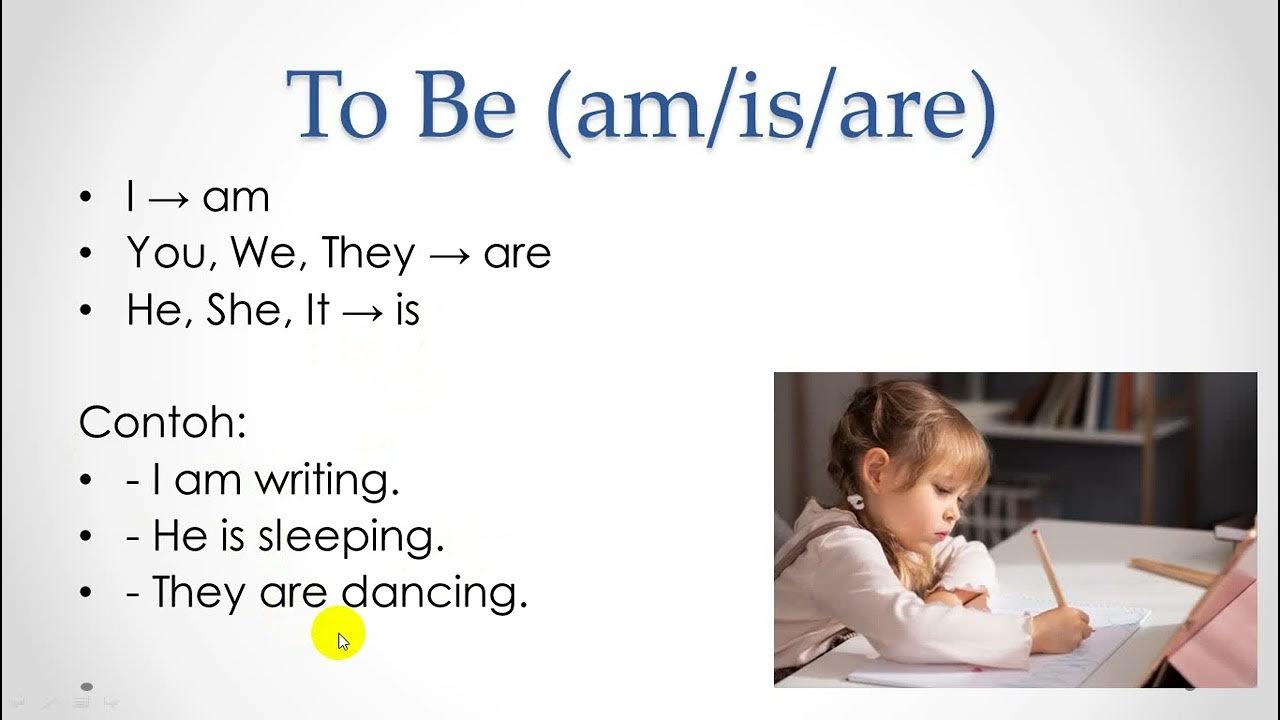Continuous Modal Verbs: Actions in Progress (Unit 18S, Level B1)
Summary
TLDRIn this lesson, we explore continuous modal verbs, which describe actions that are happening or might be happening right now or in the future. Modal verbs like 'must be,' 'might be,' 'could be,' 'should be,' and 'will be' are used to express certainty, possibility, expectation, or future events. Through various examples, the lesson highlights how these verbs help depict ongoing actions. The video also provides interactive practice by completing sentences with the appropriate continuous modal verbs, offering an engaging way to reinforce the concept of describing actions in progress.
Takeaways
- 😀 Continuous modal verbs describe actions that are ongoing or that might be happening right now or in the future.
- 😀 The basic structure of continuous modal verbs is: modal verb + be + verb + ing.
- 😀 'Must be' is used when we are sure something is happening right now (e.g., 'Your mom must be calling').
- 😀 'Might be' is used when we think something is possible but not certain (e.g., 'Donna might be studying in the library').
- 😀 'Could be' expresses possibility or uncertainty (e.g., 'They could be watching a movie at Tom's house').
- 😀 'Should be' is used to express something expected or the right thing to do (e.g., 'You should be practicing your English every day').
- 😀 'Will be' is used for actions that will be happening in the future (e.g., 'Tomorrow at this time, I will be working on my project').
- 😀 Continuous modal verbs add a sense of ongoing action to our sentences.
- 😀 These verbs help us paint a picture of what might be happening or what will happen in the present or future.
- 😀 Examples of continuous modal verbs in action include: 'must be', 'might be', 'could be', 'should be', and 'will be'.
Q & A
What are continuous modal verbs used for?
-Continuous modal verbs are used to talk about actions that are happening right now or actions we think might be happening. They help describe ongoing actions in the present or future.
What is the basic structure of a continuous modal verb sentence?
-The basic structure is: Modal verb + 'be' + verb + '-ing'. For example, 'must be calling', 'might be studying'.
When do we use 'must be'?
-'Must be' is used when we are pretty sure something is happening right now. For example, 'The phone is ringing; your mom must be calling.'
How is 'might be' different from 'must be'?
-'Might be' is used when we think something is possible but we're not completely sure. In contrast, 'must be' expresses a higher level of certainty. For example, 'Donna might be studying in the library' versus 'The phone must be ringing.'
When is 'could be' used?
-'Could be' is used to express possibility or uncertainty, similar to 'might be', but it implies a less certain possibility. For example, 'They could be watching a movie at Tom's house.'
What does 'should be' express?
-'Should be' is used when we want to say that something is expected or considered the right thing to do. For example, 'You should be practicing your English every day.'
How do we use 'will be' in continuous modal verbs?
-'Will be' is used to talk about actions that will be happening in the future. For example, 'Tomorrow at this time, I will be working on my project.'
Can you provide an example using 'must be'?
-Sure! 'The neighbor's dog must be barking because it's so noisy.' This shows a high level of certainty that the dog is barking.
What is the difference between 'might be' and 'could be'?
-'Might be' suggests a possibility, but we're not sure, whereas 'could be' also expresses possibility but with a slightly different emphasis, often suggesting more uncertainty. For example, 'She might be studying' versus 'She could be studying.'
How does 'will be' help describe future actions?
-'Will be' is used to describe actions that will be ongoing in the future. For instance, 'I will be watching TV tomorrow at this time.' It indicates something expected to happen at a specific time in the future.
Outlines

This section is available to paid users only. Please upgrade to access this part.
Upgrade NowMindmap

This section is available to paid users only. Please upgrade to access this part.
Upgrade NowKeywords

This section is available to paid users only. Please upgrade to access this part.
Upgrade NowHighlights

This section is available to paid users only. Please upgrade to access this part.
Upgrade NowTranscripts

This section is available to paid users only. Please upgrade to access this part.
Upgrade NowBrowse More Related Video

Present Continuous Tense/ Present Progressive

Present Continuous Tense

PRESENT CONTINUOUS TENSE ~ Video Pembelajaran Bahasa Inggris

آموزش زبان انگلیسی| گرامر| سطح متوسط| تفاوت زمان حال ساده و استمراری

Let's Learn: Present Continuous Tense | With Ms. Rindi

How to Use the Present Continuous - English Verb Tenses Grammar Lesson
5.0 / 5 (0 votes)